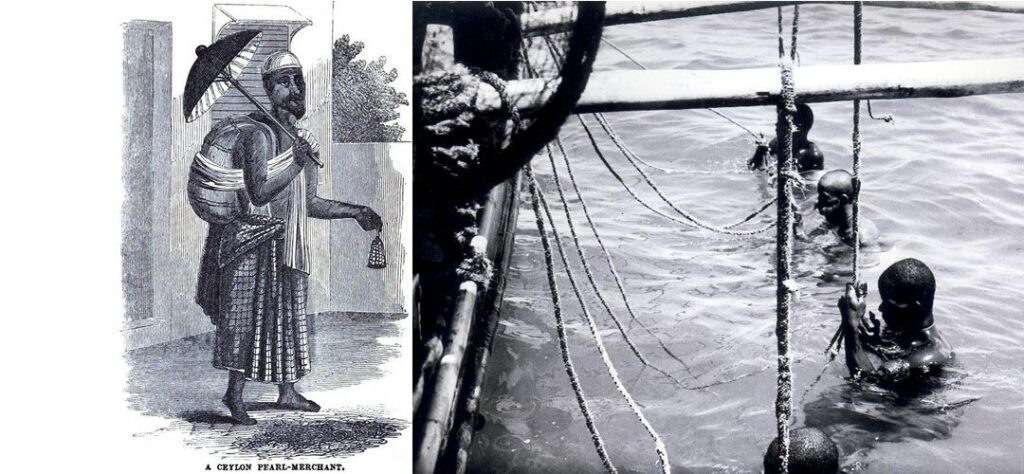On a recent deep dive into pearl diving, I discovered amazing facts about this magnificent profession. Pearl diving historically can be found all over the world. In the Americas, there is historical evidence of Native Americans harvesting freshwater pearls from rivers in Mississippi, Ohio, and Tennessee. Marine pearls came from the Ceribian and the coasts of Central and South America. As for Asia, pearl diving can be found practiced in the Arabian Gulf, India, Sri Lanka, the Philipines, and Japan.
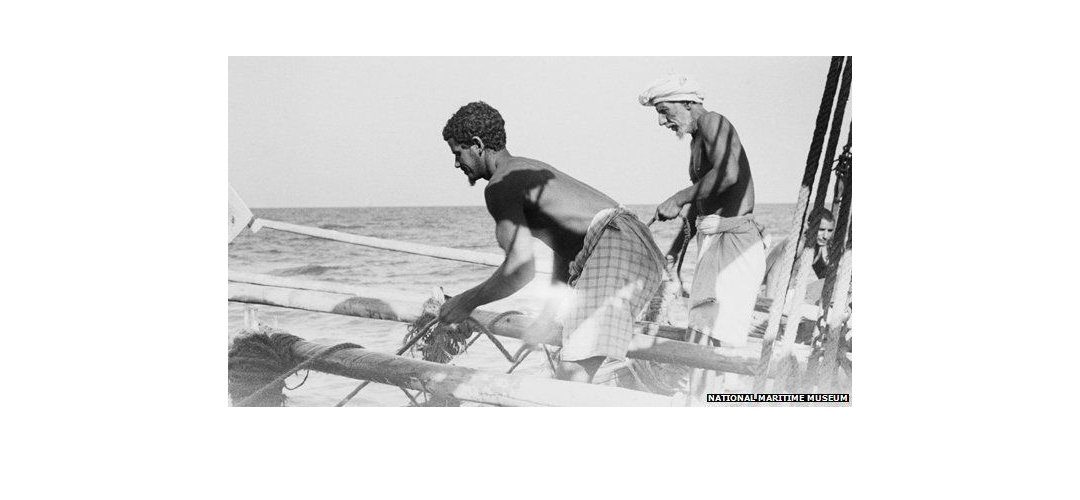
There is archeological evidence from 6000-5000 BC that proves that life in the Arabian Gulf revolved around the natural pearl. The Epic of Gilgamesh, a poem from 700 BC Mesopotamia that is among the first recorded examples of literary fiction. The poem describes how the hero dived to the depths with weights around his feet for the “flower of immortality”, a well known early allusion to pearling.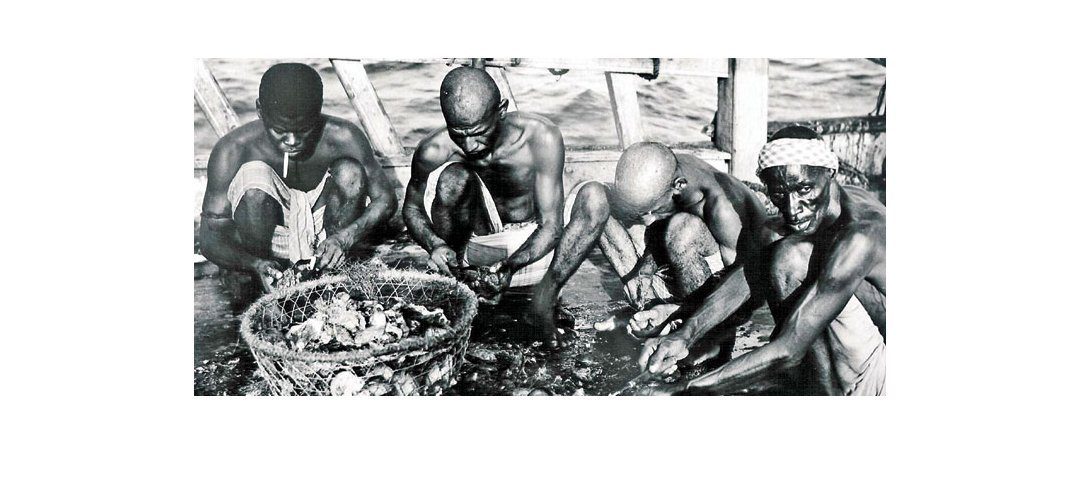
According to historical evidence, a diver descended on two ropes, which his assistant, the saib, held and controlled from the ship. He would remain underwater for 60 to 90 seconds, typically reaching depths of between six and twenty meters. With as many as 40 divers per ship, each individual usually went beneath the surface 30 to 40 times daily. Pearl diving was taxing. Divers would coat their skin in oil, plug their ears in cotton wool, put leather sheaths on their hands and fingers to avoid cutting them, hang a basket around their neck, and seal their nose with a clip. When the diver’s lungs couldn’t take it anymore he would tug the rope.
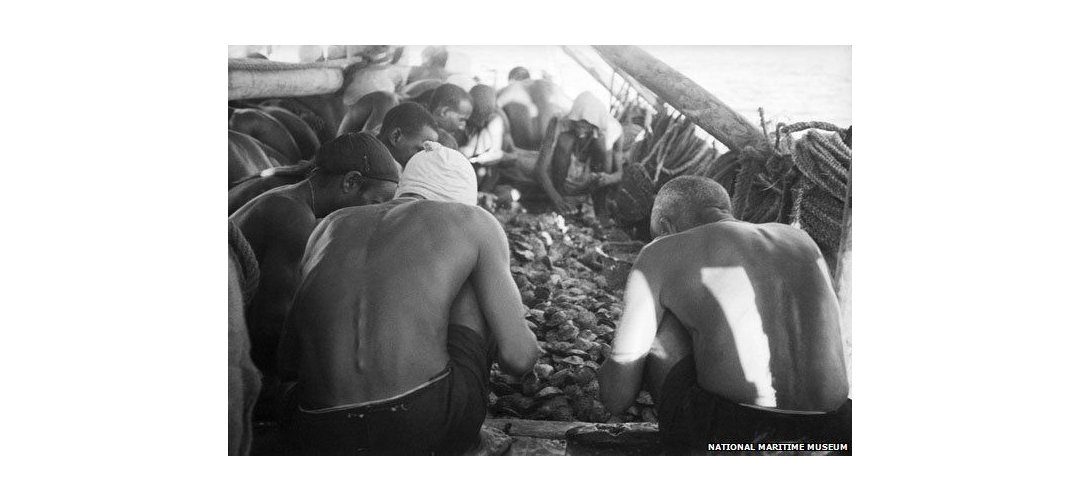
From the eighteenth Century pearls from the region were exported to India, Persia, Turkey, and to the European and Chinese markets. Pearl diving season in the Arabian Gulf lasted between May and September. During that time hundreds of wooden ships headed out to the oyster banks from Gulf towns including Kuwait, Bahrain, Dubai, and Abu Dhabi. Back then they were all small fishing harbors. Crews of divers, pulers, and apprentices lived onboard incredibly cramped conditions for weeks at a time.
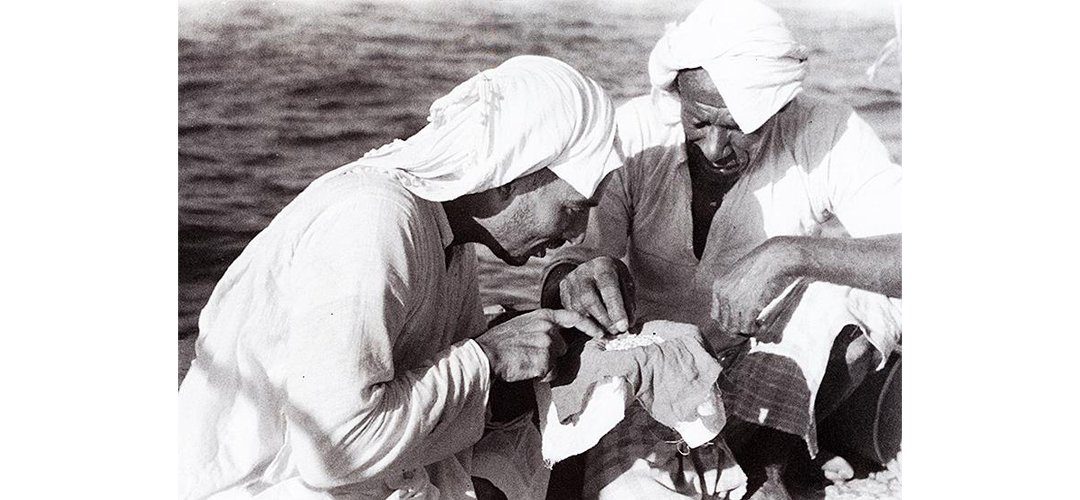
Because of the taxing nature of pearl diving, in the late 1930s, Kuwait issued the first law that organized pearl diving and fishing professions. The law contributed to ending disputes over matters pertaining to the pearl diving and fishing professions. It protected labors assets during their lives, and their families after they passed away.
The life of the pearl and the pearl diver is so fascinating. It is amazing how deep and profound this profession is!
Hussah
(Images and sources courtesy of BBC, Pinterest, ABC News, KUNA, National Maramite Museum, MENAFN, and Underwater 360)
